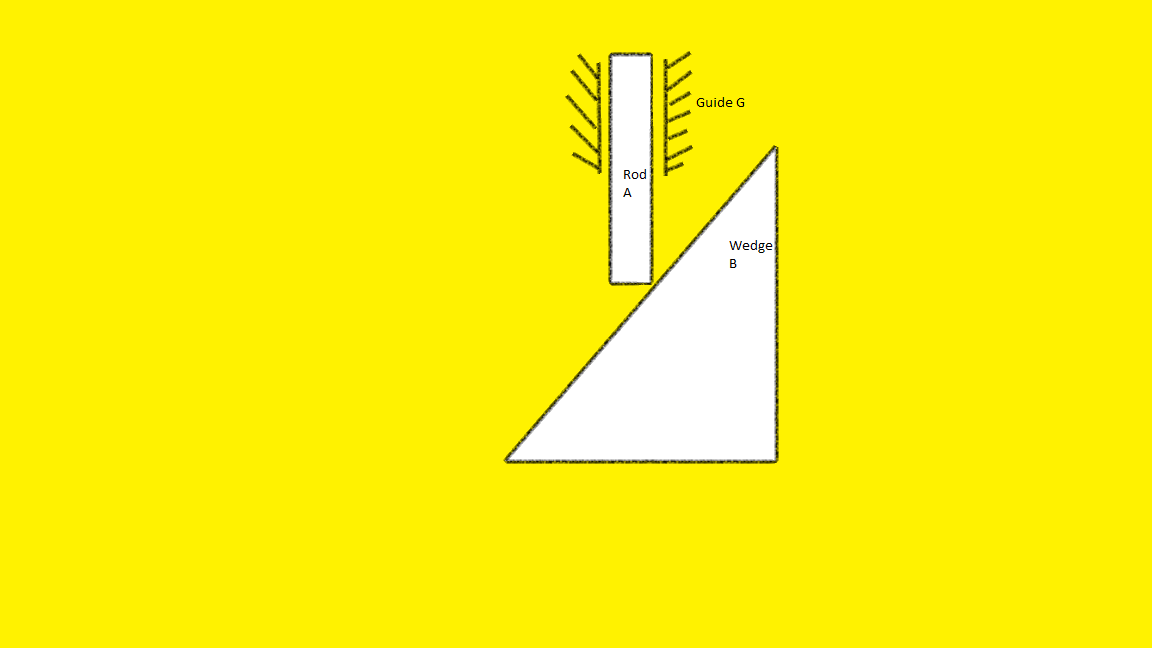A vertical rod A of mass m rests on the inclined surface of a wedge B of mass M?
A vertical rod A of mass m rests on the inclined surface of a wedge B of mass M and wedge angle #theta# .the wedge is held in position on a friction less horizontal surface.the rod A can move freely in guide G.what is the reaction of the rod on the wedge if the wedge is released?{assume all surfaces of contact to be friction less.}

A vertical rod A of mass m rests on the inclined surface of a wedge B of mass M and wedge angle

1 Answer
See below.
Explanation:
Rod
Wedge
due to geometrical restrictions
Taking the vertical component to the rod and the horizontal component to the wedge
Solving for
but
Here

